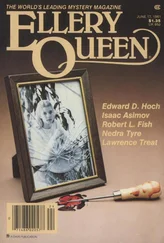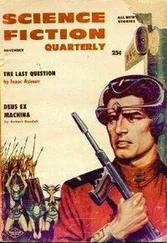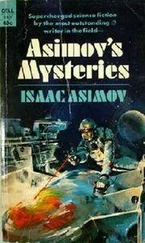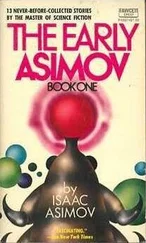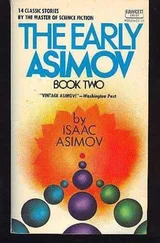Isaac Asimov - Asimov’s Guide To Shakespear. Volume 1
Здесь есть возможность читать онлайн «Isaac Asimov - Asimov’s Guide To Shakespear. Volume 1» весь текст электронной книги совершенно бесплатно (целиком полную версию без сокращений). В некоторых случаях можно слушать аудио, скачать через торрент в формате fb2 и присутствует краткое содержание. Жанр: Культурология, на английском языке. Описание произведения, (предисловие) а так же отзывы посетителей доступны на портале библиотеки ЛибКат.
- Название:Asimov’s Guide To Shakespear. Volume 1
- Автор:
- Жанр:
- Год:неизвестен
- ISBN:нет данных
- Рейтинг книги:4 / 5. Голосов: 1
-
Избранное:Добавить в избранное
- Отзывы:
-
Ваша оценка:
- 80
- 1
- 2
- 3
- 4
- 5
Asimov’s Guide To Shakespear. Volume 1: краткое содержание, описание и аннотация
Предлагаем к чтению аннотацию, описание, краткое содержание или предисловие (зависит от того, что написал сам автор книги «Asimov’s Guide To Shakespear. Volume 1»). Если вы не нашли необходимую информацию о книге — напишите в комментариях, мы постараемся отыскать её.
Asimov’s Guide To Shakespear. Volume 1 — читать онлайн бесплатно полную книгу (весь текст) целиком
Ниже представлен текст книги, разбитый по страницам. Система сохранения места последней прочитанной страницы, позволяет с удобством читать онлайн бесплатно книгу «Asimov’s Guide To Shakespear. Volume 1», без необходимости каждый раз заново искать на чём Вы остановились. Поставьте закладку, и сможете в любой момент перейти на страницу, на которой закончили чтение.
Интервал:
Закладка:
… Berowne, Dumaine, and Longaville
No action in the play has any but the very faintest and most distant association with the real Henry of Navarre, of course, but Shakespeare continues to use reality as the source of inspiration for names at least.
Thus, the King turns to the three with him and says:
You three, Berowne, Dumaine, and Longaville,
Have sworn for three years' term to live with me,
My fellow scholars …
—Act I, scene i, lines 15-17
The name Berowne may have been inspired by Armand de Gontaut, Baron de Biron, who was a close associate of Henry of Navarre and who in 1589 gained the leadership of his armies. He won victories for Henry and was killed in battle in 1592.
Biron had been closely associated with the expeditionary force led by Essex. This made Biron specially popular in England and it is not surprising that Shakespeare makes Berowne the most attractive person in the play.
Longaville is a version of Longueville and there was a Due de Longueville also among Henry's generals.
Dumaine is not so easy to place. That name may have been inspired by Charles, Duc de Mayenne, who was associated with Henry IV, but not as a friend. Mayenne was the leader of the Catholic opposition to Henry. To be sure, after Henry's conversion Mayenne was reconciled to the King and from 1596 on remained completely loyal to him. This, however, certainly took place well after the play was written.
The French king's daughter. ..
Berowne is the one companion who doesn't think the King's plan will work. He doubts that they can successfully make themselves strict and austere philosophers for three years. He particularly doubts they can really forswear female company, as the King plans to have them do. In fact, that would be impossible, for Berowne says:
This article, my liege, yourself must break;
For well you know here comes in embassy
The French king's daughter with yourself to speak,
A maid of grace and complete majesty,
—Act I, scene i, lines 132-35
This too has a glancing resemblance to the real-life career of Henry of Navarre. In 1572 young Henry (only nineteen at the time) was married to Marguerite de Valois (also nineteen). At that time Henry III's older brother, Charles IX, was still on the throne (he didn't die till 1574) and Marguerite was sister to both of them. All three of them, Henry III, Charles LX, and Marguerite (plus an earlier short-lived monarch, Francis II), were children of King Henry II of France, who had died in 1559.
The continuing religious civil war made the marriage no idyll, but in 1578 there was a well-publicized visit of Marguerite (along with her mother, Catherine de' Medici) to the court of Navarre. It may well have been this visit which was in Shakespeare's mind.
If the visit was intended to improve the state of the marriage, by the way, it failed miserably. Henry was interested in many ladies and Marguerite bore him no children. Finally, in 1599, their marriage was annulled and Henry was able to marry again and beget an heir to the throne. This, however, was well after Love's Labor's Lost was written.
… surrender up of Aquitaine
And why was the French princess coming? Berowne says that the embassy is
About surrender up of Aquitaine
To her decrepit, sick, and bed-rid father.
—Act I, scene i, lines 136-37
The matter of Aquitaine is pure invention, of course. Even at its most powerful, Navarre never controlled that large section of southern France called Aquitaine (see page II-209). The name, however, would be a familiar one to Englishmen if only because Eleanor of Aquitaine was one of the most famous of English queens.
The real Marguerite de Valois had no living father at the time of her marriage to Henry. She had been only six years old when her father died. However, the French royal family, at the time the play was written, seemed indeed decrepit, sick, and bed-rid. In 1588 Henry III of France had reigned fourteen years and though only thirty-seven was prematurely aged, and exhausted by the crises of the time and his personal excesses. Two older brothers had reigned briefly and died, one at sixteen and one at twenty-four. A younger brother was already dead at thirty, and none of the brothers left descendants.
… Armado hight
It seems that the Princess must be greeted and entertained despite all ascetic arrangements. The cynical Berowne, delighted, inquires if there is any other and more reliable entertainment allowed the scholars than the occasional visit of a princess.
The King informs him that there is an eccentric and euphuistic Spaniard at the court who can be very entertaining, albeit unconsciously so. He refers to him as:
This child of fancy, that Armado hight [is named],
—Act I, scene i, line 169
If the play were written in the aftermath of the great defeat of the Spanish fleet in 1588, a Spaniard would be a natural butt for the play, and his name, Armado (Don Adriano de Armado in full, according to the cast of characters), is a none too subtle recall of the defeated Armada.
There has been a tendency for some people to find satirical representations in all the characters of this play. If it were written for a small "in group" rather than for the general public, it might well contain "in jokes" against the personal enemies of the group in the audience.
Thus, the Earl of Essex had become Queen Elizabeth's favorite in the very years of the Armada (and this play) after her previous favorite, the Earl of Leicester, died. Essex's great rival was Sir Walter Raleigh, who had been Leicester's protege and whose nose had been put out of joint by the handsome Essex's greater success with the Queen. Some people therefore think that Armado was intended as a satire on Raleigh for the amusement of the Essex coterie. However, there seems little one can point to in what Armado says or does that has "Raleigh" written on it. (There are other candidates for the role of real-life Armado too, but none are really convincing.)
Boy, what sign…
Armado at once enters the plot, indirectly, to lend humor to it. He has spied a country bumpkin, Costard, making love to a young country girl, Jaquenetta, in defiance of the published edict against association with womankind, and has reported the matter to the authorities. Costard is arrested by Constable Dull and is turned over to the custody of Armado.
It turns out, of course, that Armado is himself in love with Jaquenetta, and he displays this in the approved manner of the puling stage lover. He uses his page as a sounding board for his melancholy and says:
Boy, what sign is it when a man
of great spirit grows melan choly?
—Act I, scene ii, lines 1-2
The page is of the smallest possible size and is named Moth (pronounced "mote" in Shakespeare's day with the obvious pun). It is his function to be witty in Shakespearean fashion, so he answers:
A great sign, sir, that he will look sad.
—Act I, scene ii, line 3
Some people have attempted to equate Moth with Thomas Nashe, a pamphleteer who was contemporary with Shakespeare and who engaged in battles of wits in polemical style with other controversialists. He was coarse, pretentious, and arrogant.
By those who think this, Armado is equated with Gabriel Harvey, another controversialist of the time who was an opponent of Nashe's. The Armado-Moth quibbling might therefore be taken to represent, with satiric inadequacy, the Homeric polemics of Harvey and Nashe.
Samson, master …
Интервал:
Закладка:
Похожие книги на «Asimov’s Guide To Shakespear. Volume 1»
Представляем Вашему вниманию похожие книги на «Asimov’s Guide To Shakespear. Volume 1» списком для выбора. Мы отобрали схожую по названию и смыслу литературу в надежде предоставить читателям больше вариантов отыскать новые, интересные, ещё непрочитанные произведения.
Обсуждение, отзывы о книге «Asimov’s Guide To Shakespear. Volume 1» и просто собственные мнения читателей. Оставьте ваши комментарии, напишите, что Вы думаете о произведении, его смысле или главных героях. Укажите что конкретно понравилось, а что нет, и почему Вы так считаете.

